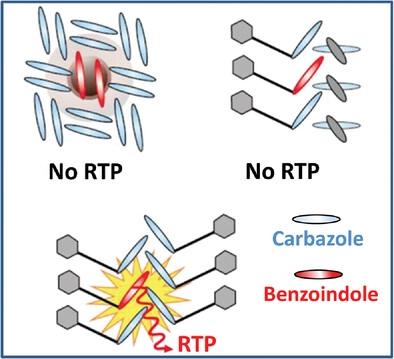当前位置:
X-MOL 学术
›
Adv. Opt. Mater.
›
论文详情
Our official English website, www.x-mol.net, welcomes your feedback! (Note: you will need to create a separate account there.)
Necessary and Sufficient Condition for Organic Room-Temperature Phosphorescence from Host–Guest Doped Crystalline Systems
Advanced Optical Materials ( IF 9 ) Pub Date : 2023-03-27 , DOI: 10.1002/adom.202300289 Catherine Demangeat 1 , Yipeng Tang 2 , Yixuan Dou 2 , Sherrice Dale 2 , Jakob Cielo 2 , Eunkyoung Kim 3 , Ha‐Jin Lee 4 , Anthony D'Aléo 5 , Bin Hu 2 , André‐Jean Attias 1
Advanced Optical Materials ( IF 9 ) Pub Date : 2023-03-27 , DOI: 10.1002/adom.202300289 Catherine Demangeat 1 , Yipeng Tang 2 , Yixuan Dou 2 , Sherrice Dale 2 , Jakob Cielo 2 , Eunkyoung Kim 3 , Ha‐Jin Lee 4 , Anthony D'Aléo 5 , Bin Hu 2 , André‐Jean Attias 1
Affiliation

|
Controlling and predicting the long-lived room-temperature phosphorescence (RTP) from organic materials are the next challenges to address for the realization of new efficient organic RTP systems. Here, a new approach is developed to reach these objectives by considering host–guest doped crystals, as well-suited model systems in that they allow the comprehensive understanding of synergetic structural interactions between crystalline host matrices and emitting guest molecules, one of the key parameters to understand the correlation between the solid-state organization and crystal RTP performances. Two series of σ-conjugated donor/acceptor (D-σ-A) carbazole-based matrices and isomeric 1H-benzo[f]indole-based dopants are designed, capable of exploring a wide variety of conformations thanks to large rotational degrees of freedom provided by the σ-conjugation. By correlating the results of single-crystal X-ray diffraction analysis and photoluminescence properties, a necessary and sufficient condition for RTP is established that paves the way for the development of new long-lived RTP host–guest doped systems.
中文翻译:

主客体掺杂晶体体系有机室温磷光的充要条件
控制和预测有机材料的长寿命室温磷光 (RTP) 是实现新型高效有机 RTP 系统的下一个挑战。在这里,开发了一种新方法来实现这些目标,将主客体掺杂晶体作为非常合适的模型系统,因为它们允许全面了解晶体主基体和发射客体分子之间的协同结构相互作用,这是关键参数之一了解固态组织与晶体 RTP 性能之间的相关性。两个系列的 σ 共轭供体/受体 (D-σ-A) 咔唑基基质和异构体 1 H -benzo[ f]基于吲哚的掺杂剂的设计,由于 σ 共轭提供的大旋转自由度,能够探索各种各样的构象。通过将单晶 X 射线衍射分析结果与光致发光特性相关联,建立了 RTP 的充分必要条件,为开发新型长寿命 RTP 主客体掺杂系统铺平了道路。
更新日期:2023-03-27
中文翻译:

主客体掺杂晶体体系有机室温磷光的充要条件
控制和预测有机材料的长寿命室温磷光 (RTP) 是实现新型高效有机 RTP 系统的下一个挑战。在这里,开发了一种新方法来实现这些目标,将主客体掺杂晶体作为非常合适的模型系统,因为它们允许全面了解晶体主基体和发射客体分子之间的协同结构相互作用,这是关键参数之一了解固态组织与晶体 RTP 性能之间的相关性。两个系列的 σ 共轭供体/受体 (D-σ-A) 咔唑基基质和异构体 1 H -benzo[ f]基于吲哚的掺杂剂的设计,由于 σ 共轭提供的大旋转自由度,能够探索各种各样的构象。通过将单晶 X 射线衍射分析结果与光致发光特性相关联,建立了 RTP 的充分必要条件,为开发新型长寿命 RTP 主客体掺杂系统铺平了道路。


























 京公网安备 11010802027423号
京公网安备 11010802027423号